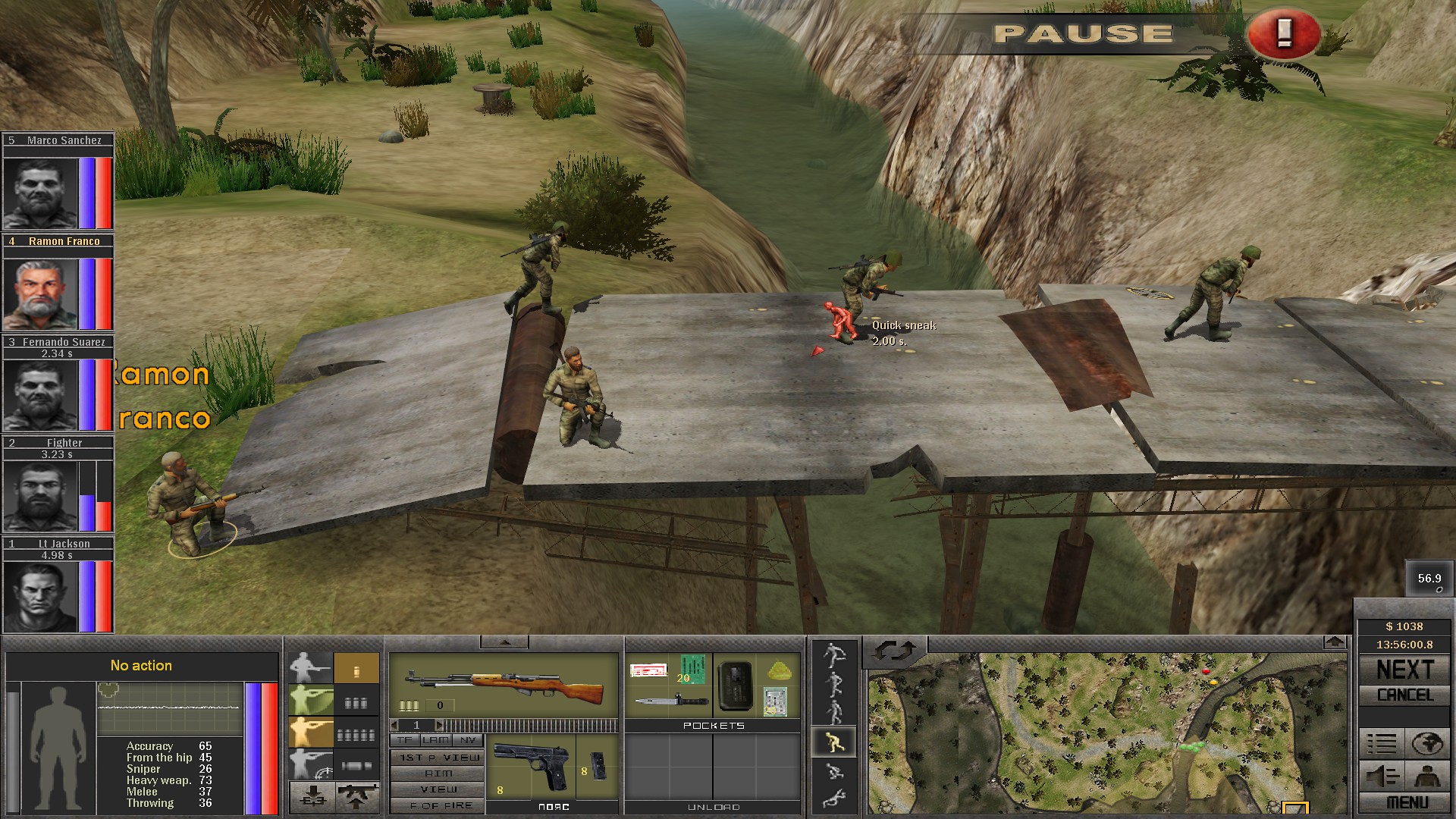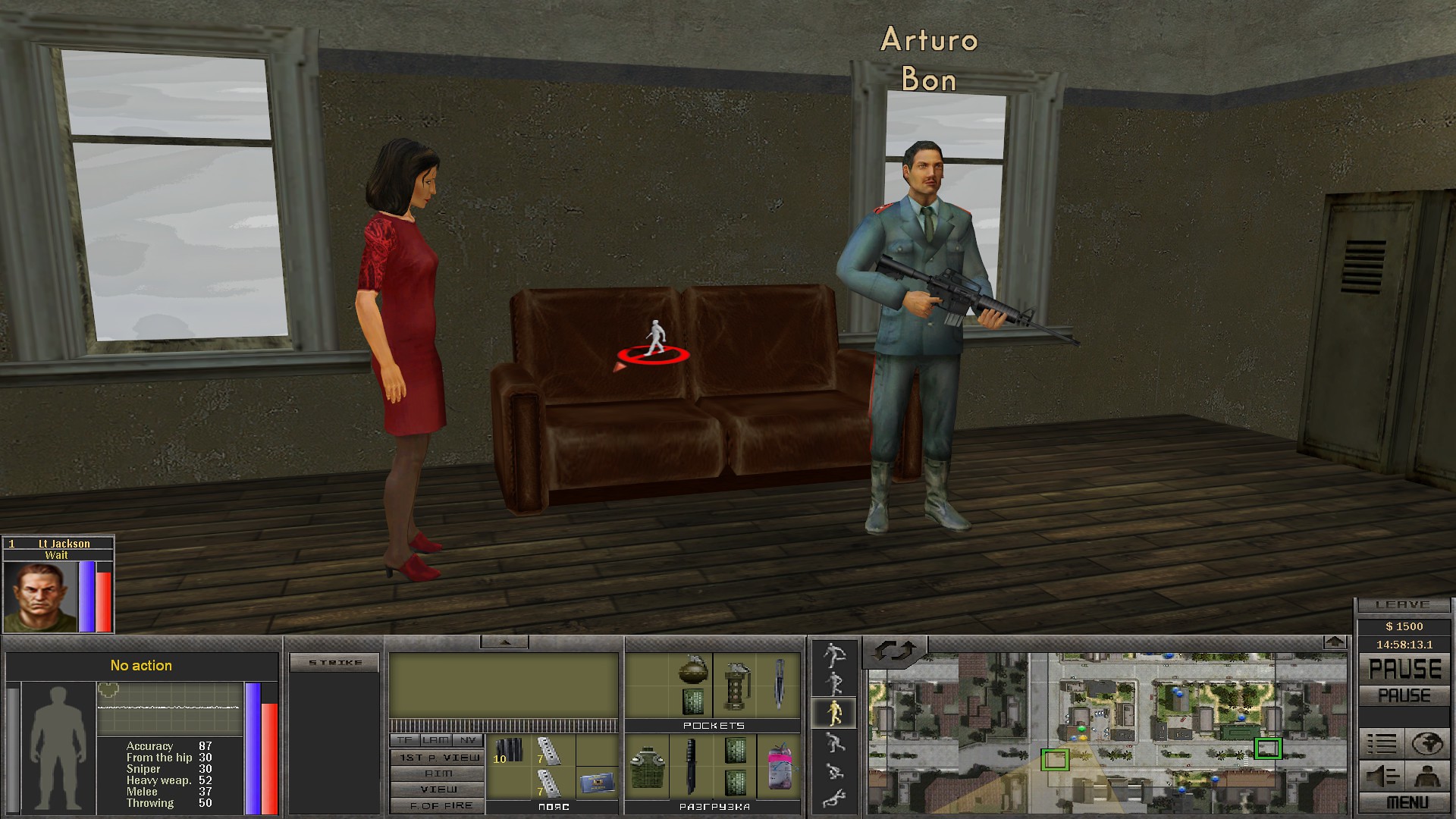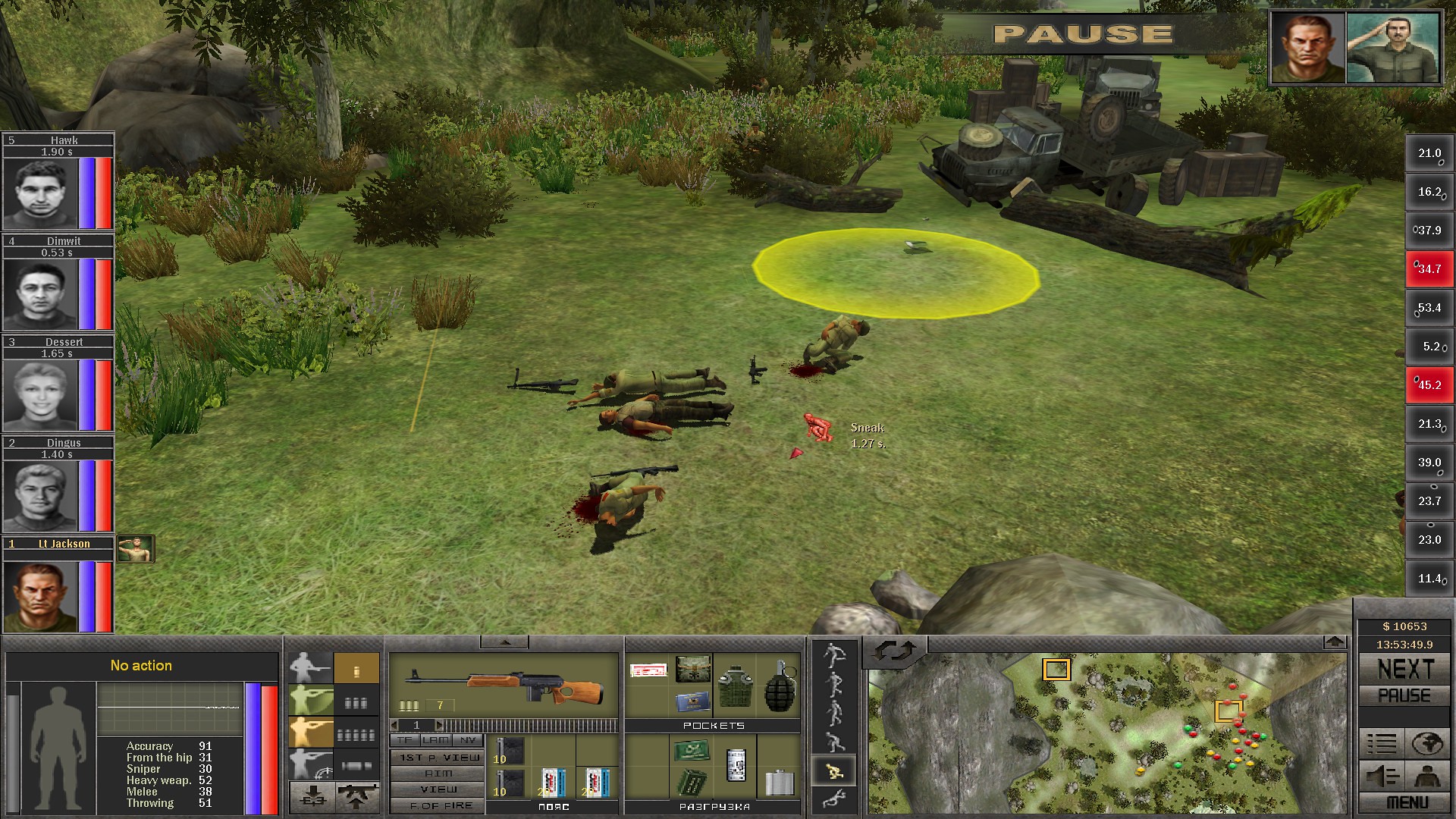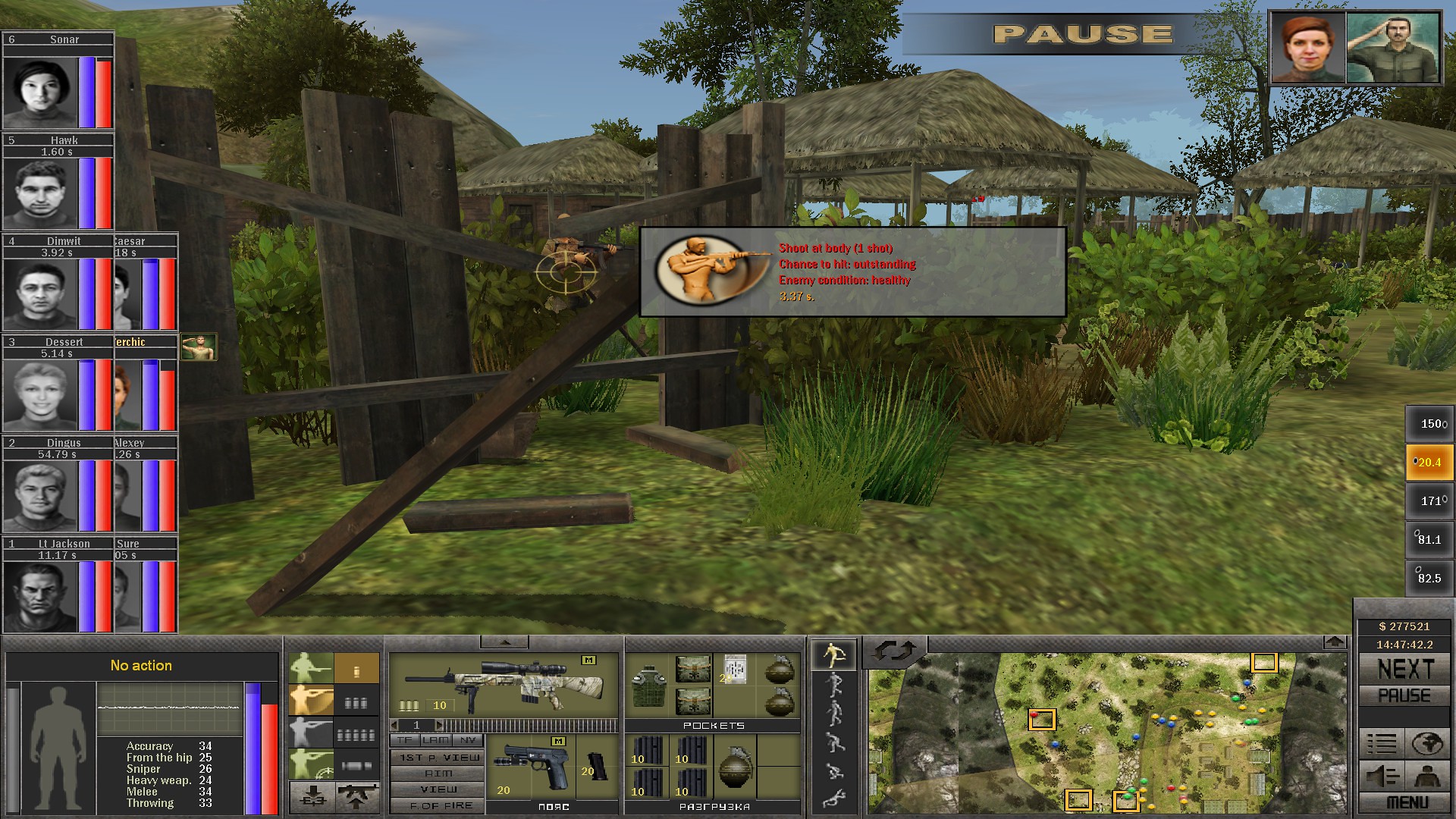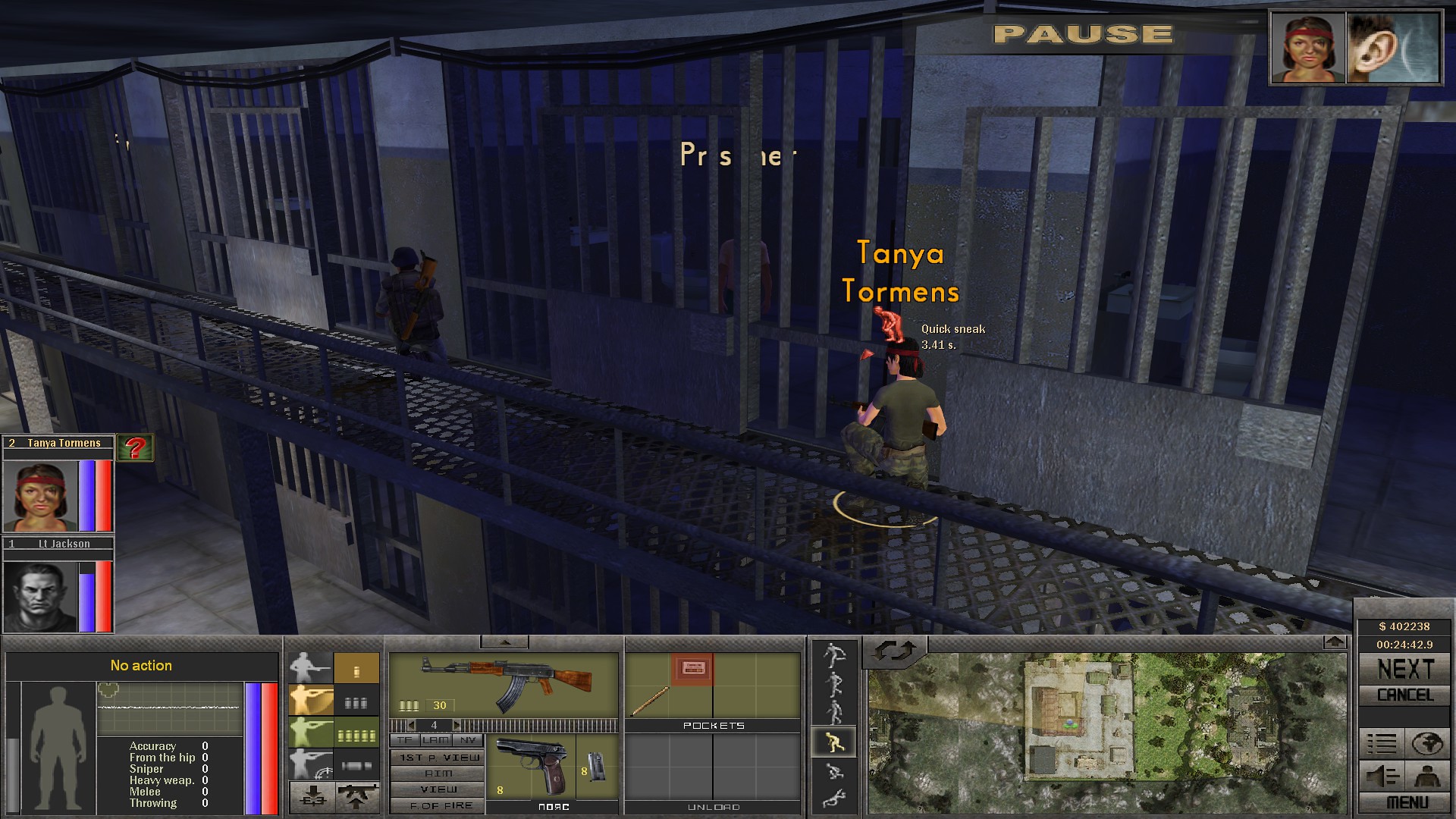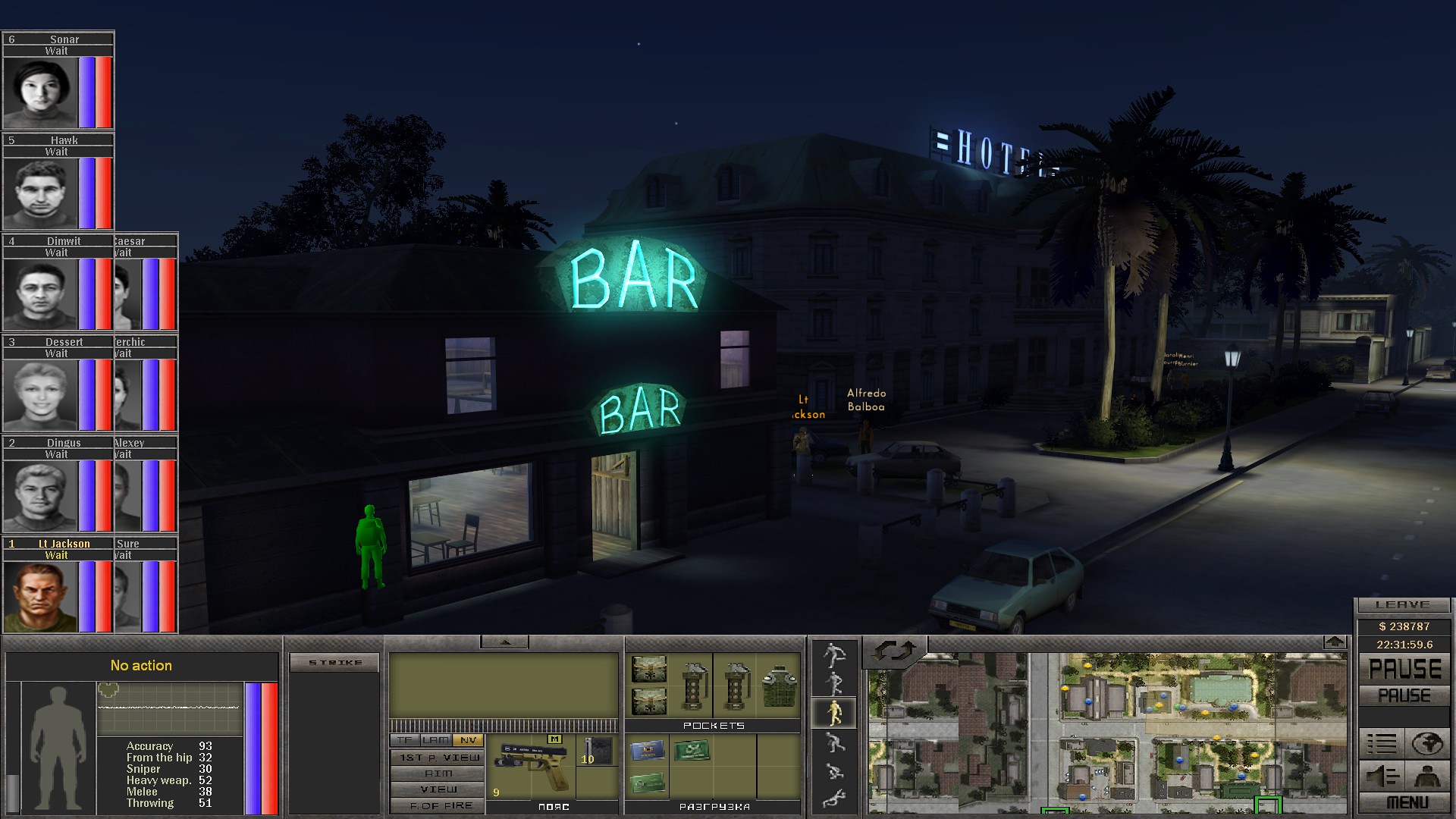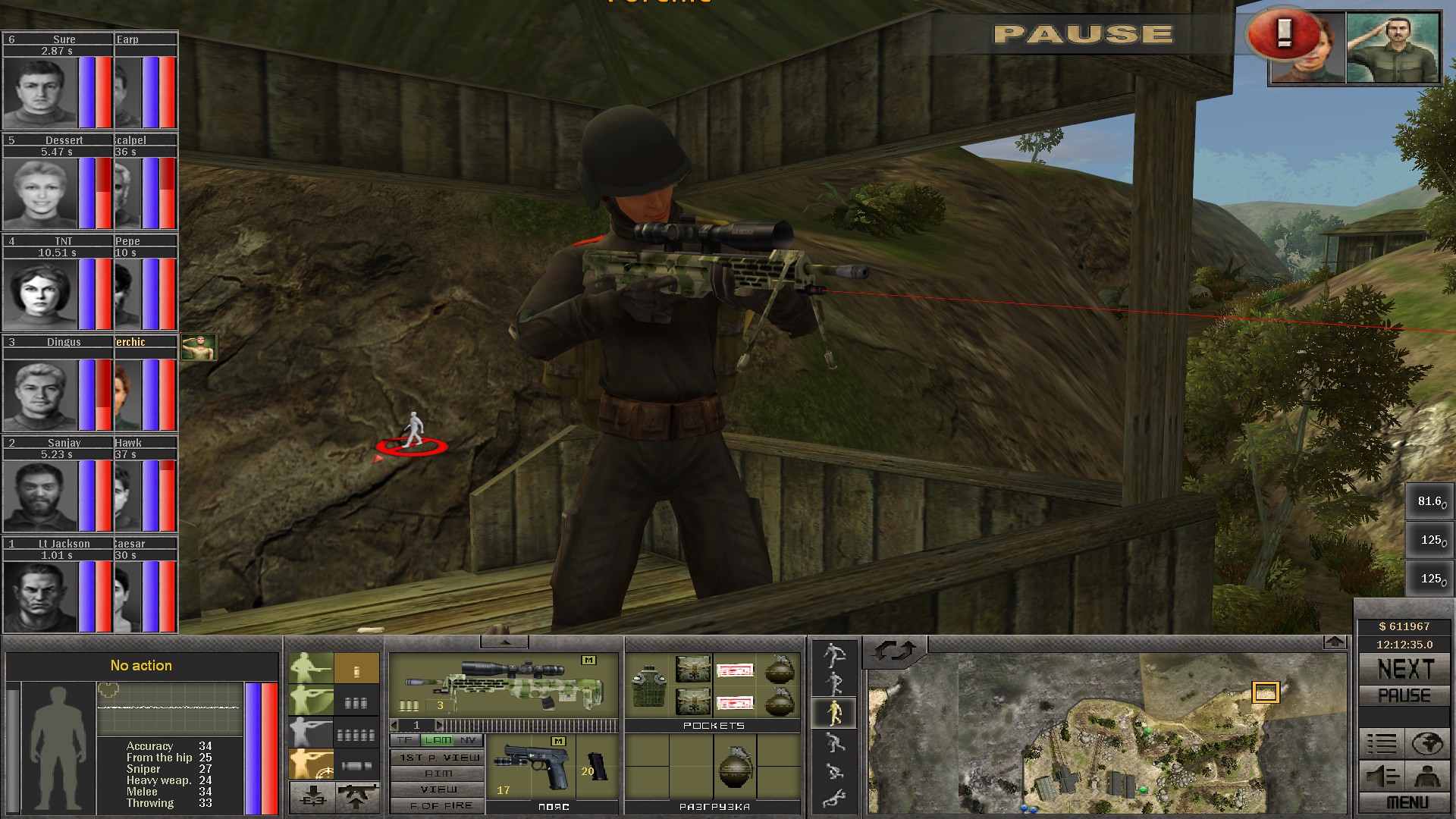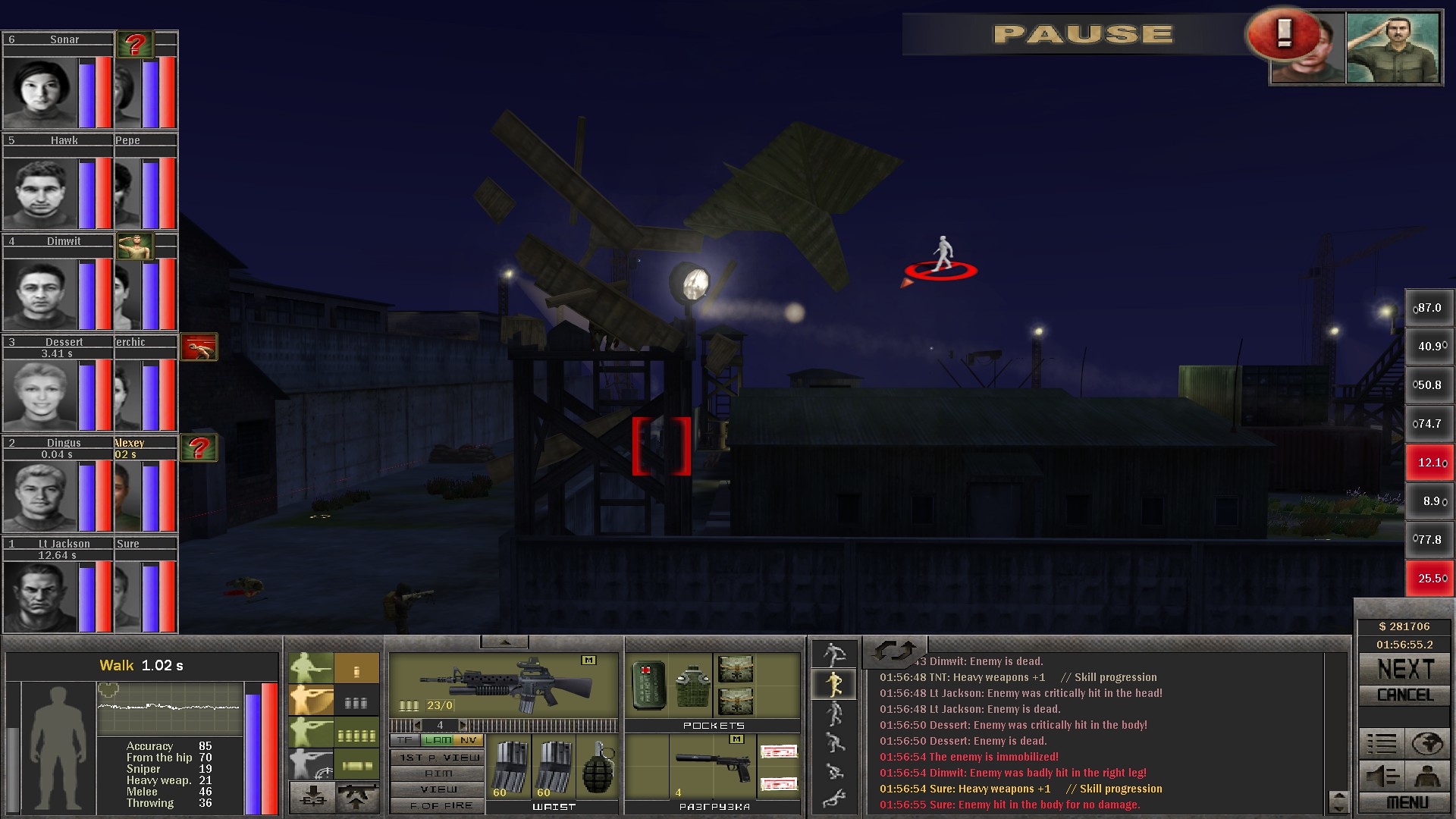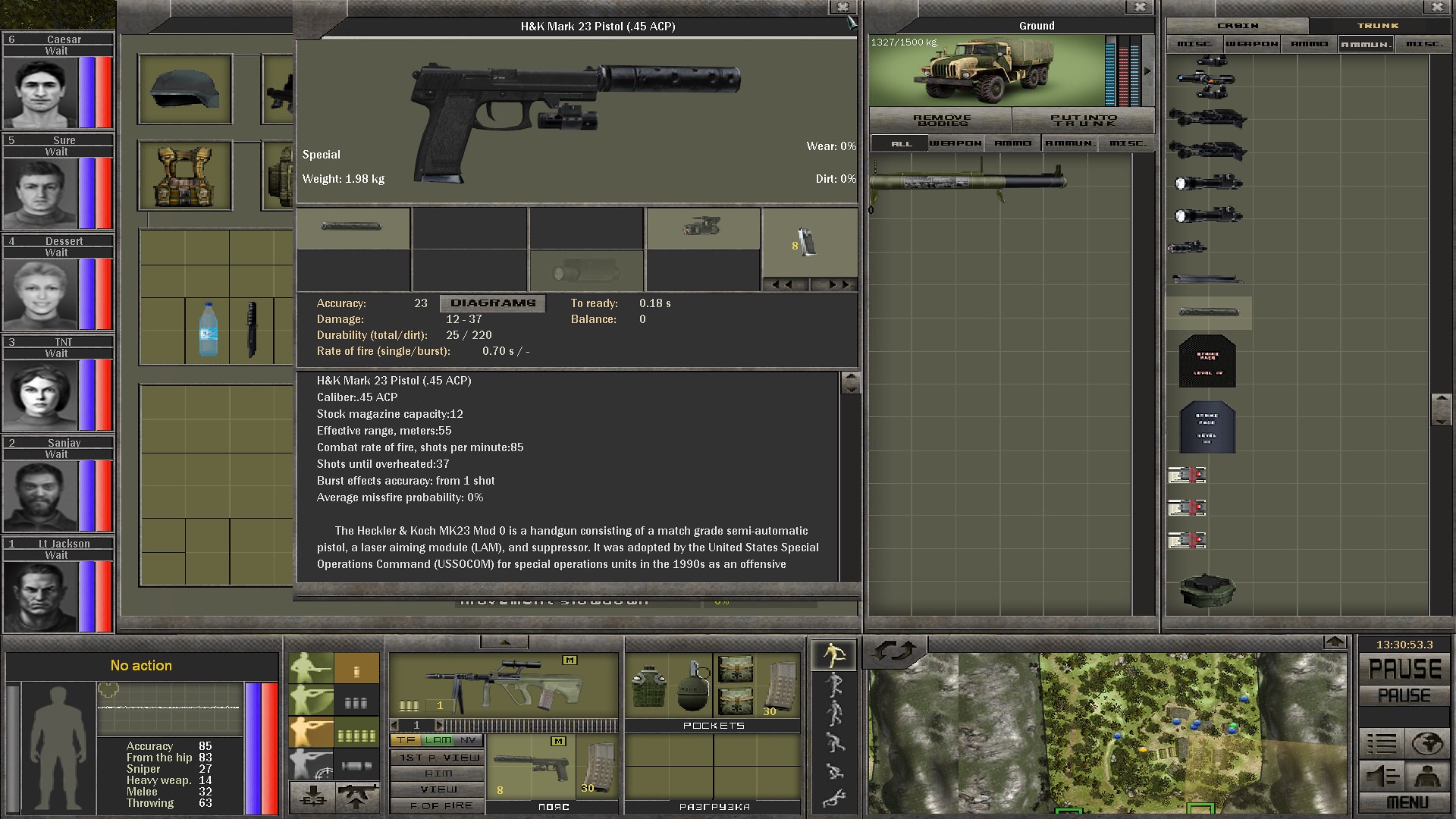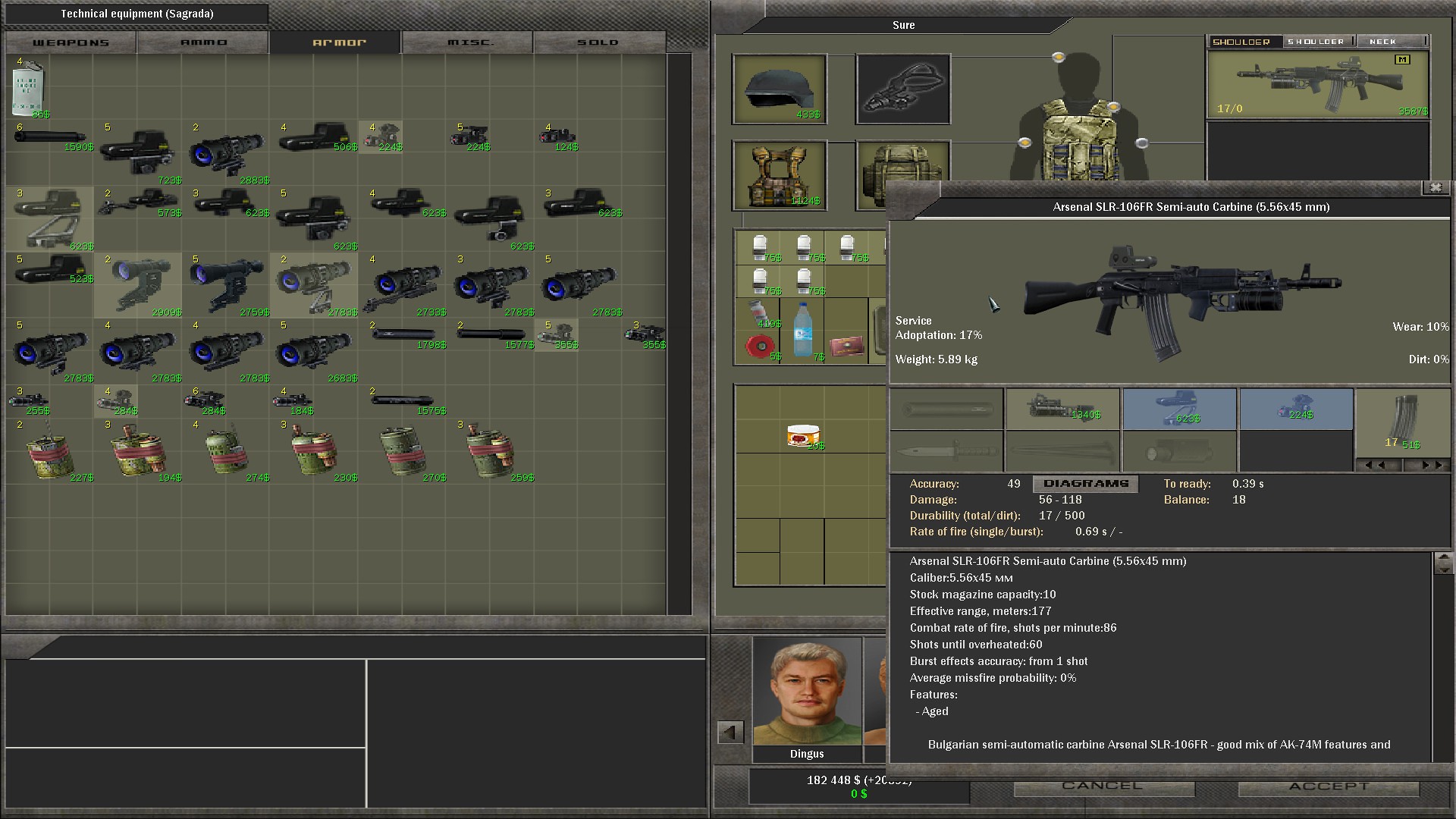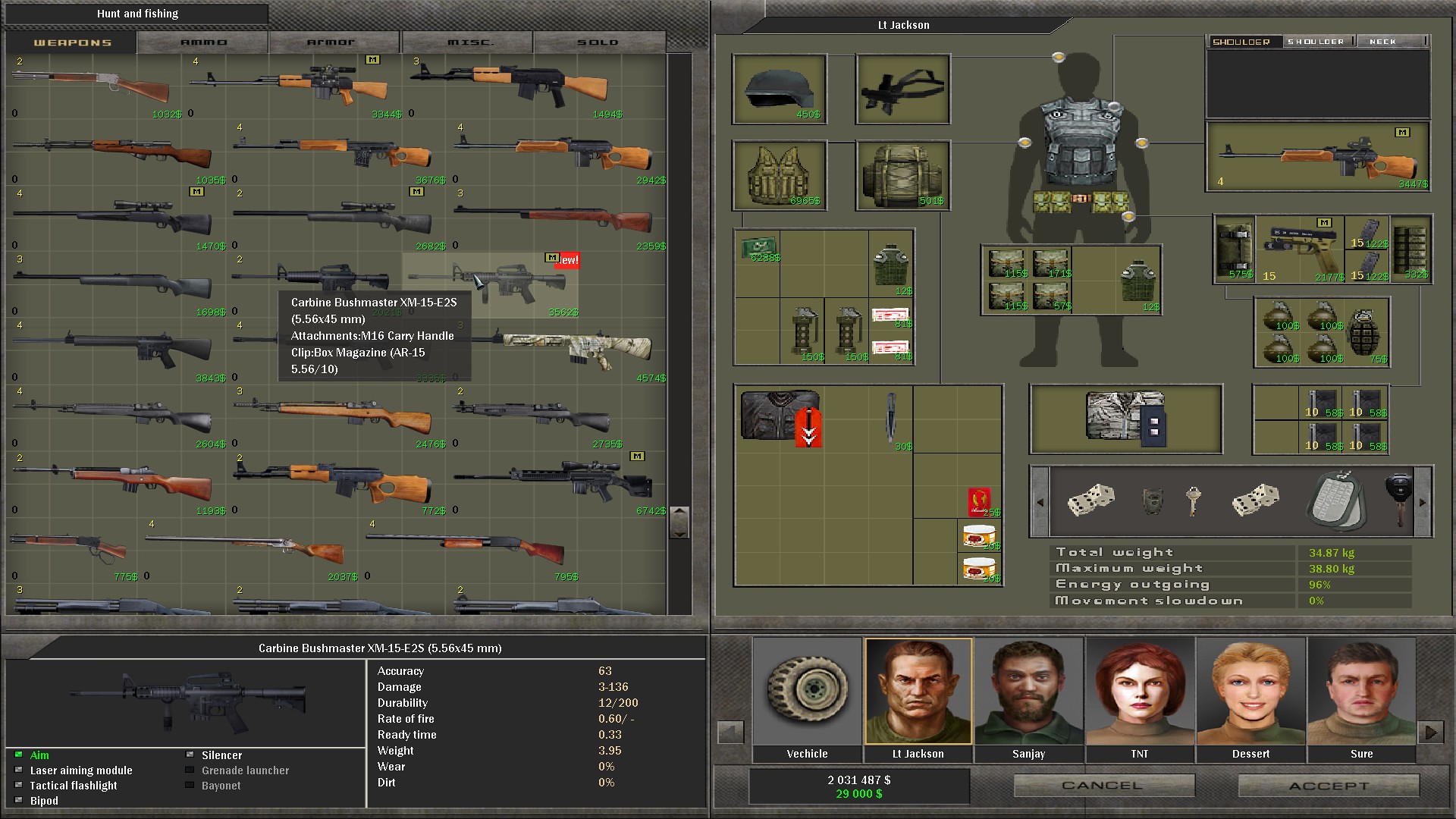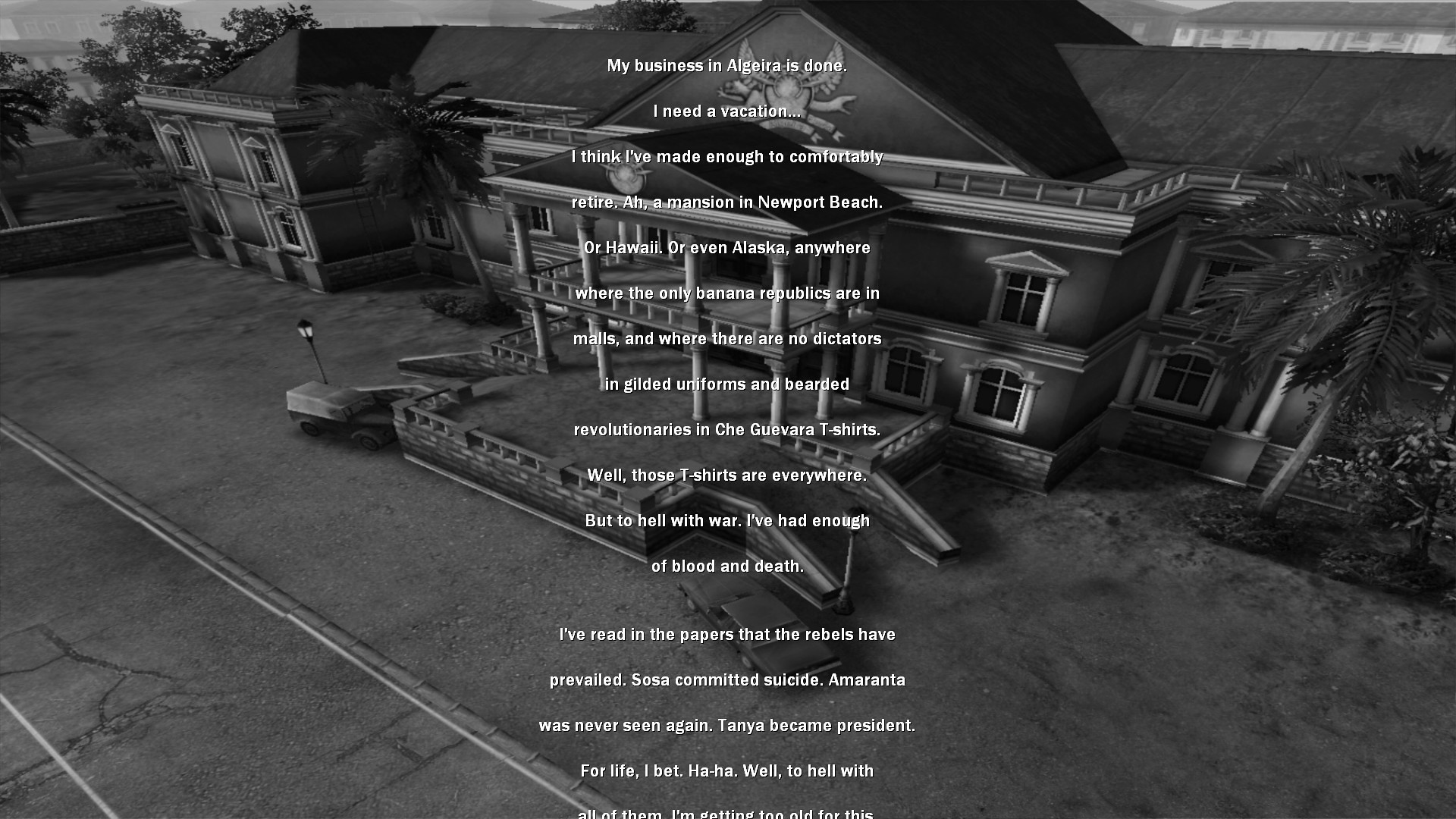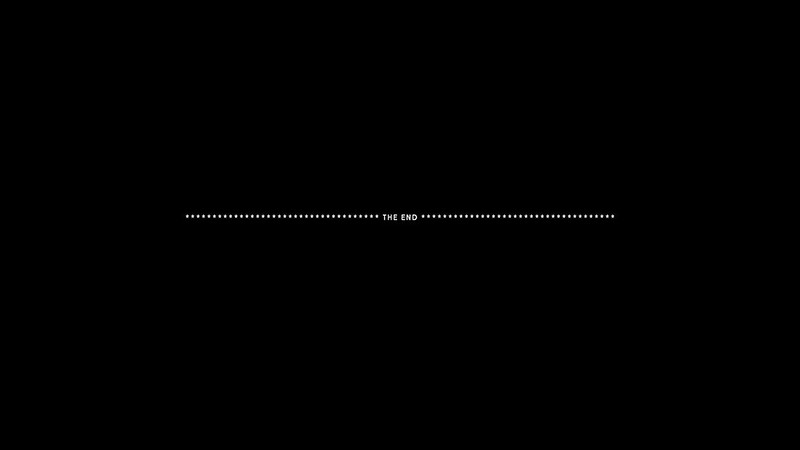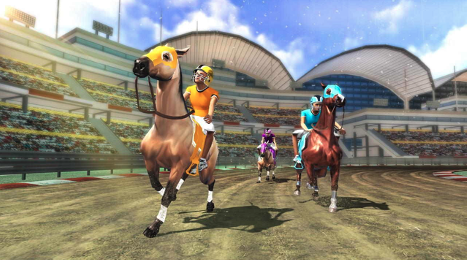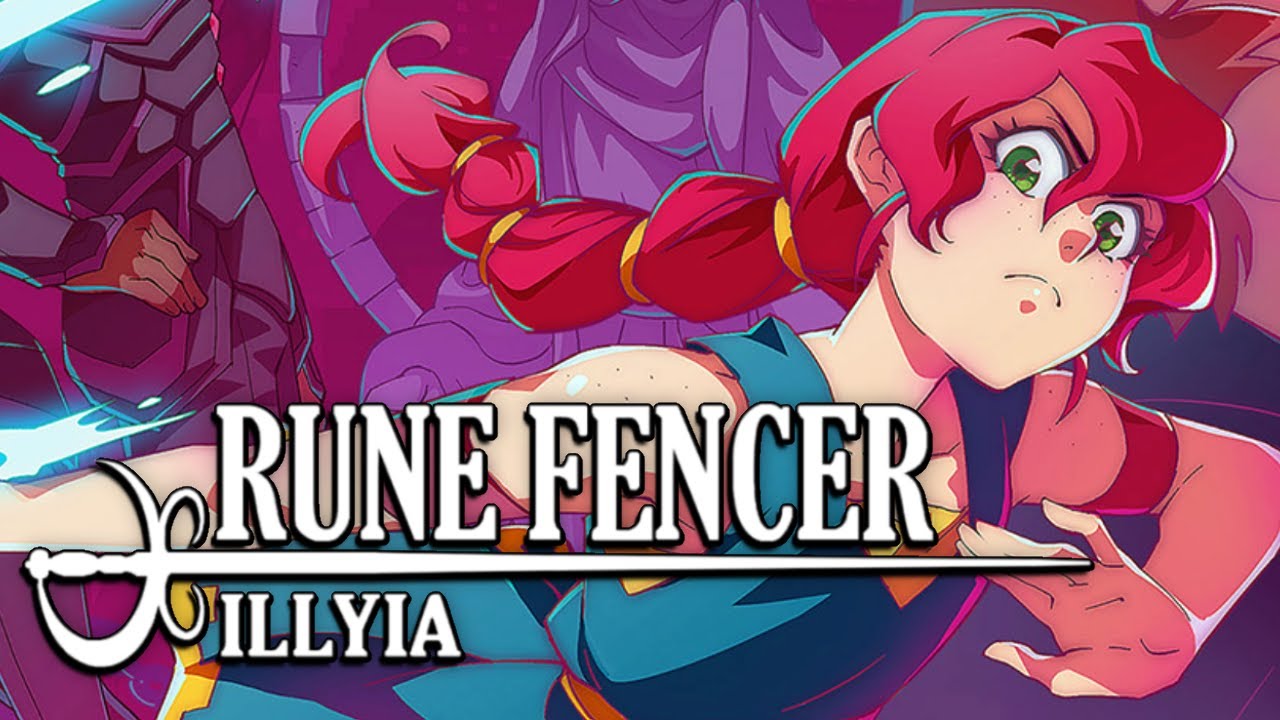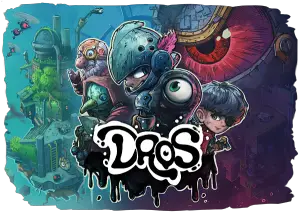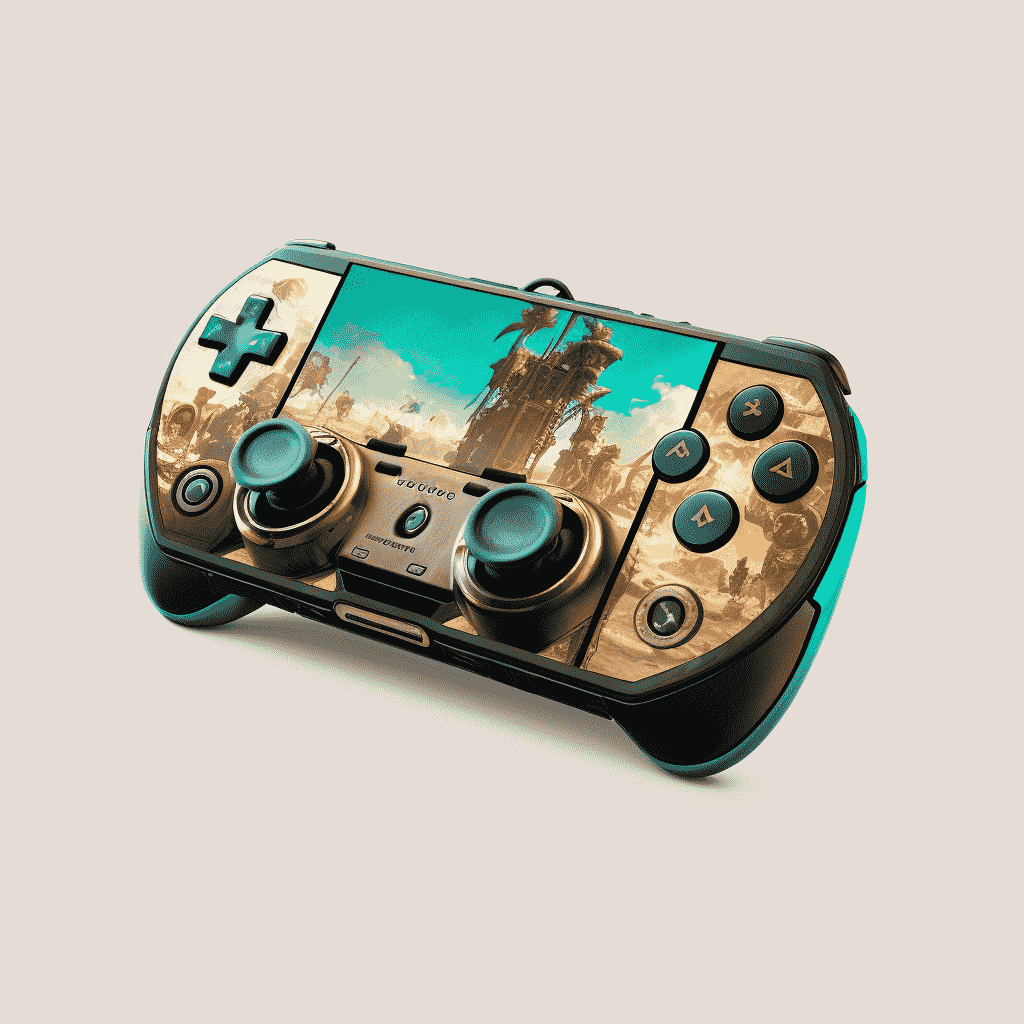Title: 7.62 Hard-Life
Genre: SRPG
Platform(s): PC
Developer: HLA Team/Apeiron
Publisher: 1C Company
Release Date: 2007/2015
1C Company, Apeiron and HLA Team’s 7.62 is a hard life indeed… but not in the good way. After spending nearly 165 hours with the game I can safely say right from the start that you’ll want to skip this one. Even if you’re desperately looking for a solid Jagged Alliance clone you won’t find it here with all the bugs, glitches, game crashes, and save corruptions you’ll have to fight your way through in order to get to the ending credits.
The original 7.62 High Calibre came out back in 2007. It’s a real-time strategy game themed around hiring mercenaries and carrying out missions for clients in a typically sandbox-oriented environment broken down into sectors that can be explored via a global map. In other words, it’s a Jagged Alliance clone of the SRPG variety, just nowhere near as good.
Apeiron has been making games like this for some time, and before the 7.62 series they worked on another Jagged Alliance knockoff known as Brigade E5: New Jagged Union. I played that game nearly a decade ago but found it utterly lacking due to a number of missing features compared to Sir-Tech’s iconic game. For instance, it lacked a lot of verticality, akimbo weapon handling, lack of physics-based destruction, limited squad size, and a ton of other quality of life and mechanical setbacks that made it more of a hassle to play than it should have been.
7.62 Hard Life is a community-made expansion pack from the HLA Team that takes the basics of 7.62 High Calibre and expands it with a ton of new content, missions, weapons, sounds, story quests, bug fixes, NPCs, and maps. It came out back in 2015, after the team spent nearly seven years working on it.
Some of it plays well, other parts are a complete wash.
Unfortunately all of the hard work that the HLA Team put into 7.62 Hard Life still don’t accommodate for all of the broken aspects of the original game, in addition to adding new broken mechanics to the expansion.
Streamlining The Story
So the biggest change right off the bat between Hard Life and High Calibre is that after selecting your main character you start in a completely different part of the map and with a completely different story setup.
In the original High Calibre, the story was streamlined to introduce the player to the game’s mechanics and features.
You’re given a brief cinematic in the original game about why you’re in Algeria and how you’re tasked with hunting down a Russian businessman-turned-criminal who fled to the Latin American country.
Now in High Calibre the story starts in the main resort town of Puerto Viejo, controlled by a not-so-bad-dictator named President Sosa. They give you $5,000 to start and set you about with basic fetch quests and delivery missions within the region, slowly helping you increase your cash so you can hire additional mercenaries to perform increasingly difficult quests. Your main goal is to eventually gather enough funds, equipment, and clout to find out where the Russian criminal is hiding and either kill him or bring him back to a shady Russian wetworks agent that hired you to track down said criminal.
Along the way you’ll be able to pick up additional mercenary missions from an AIS contact using a post office as a front. These missions pay out small sums and also help you increase your stats.
In short, 7.62 High Calibre eases you into the game and its mechanics. Typical SRPG-style.
A Bridge Too Far
7.62 Hard Life is on the opposite end of the spectrum. If you never played 7.62 High Calibre you’re in for a rude awakening. Instead of starting in the town and having the ability to freely sculpt your playthrough and affiliations as you see fit, it starts you off with the guerrillas deep into the jungle. You don’t even access the Russian criminal quest (the main objective of the game) until much later on. Instead, they obfuscate your task and give your character amnesia, with the story being that you were attacked, your unit was destroyed, you lost all your equipment and money, and you barely survived, losing your memory in the process. The guerrillas take you in and fix you up, but in exchange you have to do some missions for them.
Where you start in Hard Life, however, is actually located about a third of the through the story of High Calibre. So the difficulty is spiked right at the start. The fact that they strip you of your equipment and money makes things even harder, as you have to equip yourself with whatever is laying around from the dead bodies in the starting sectors and you don’t have enough to hire any mercs to help you out.
Additionally, you’re forced to align with the guerrillas throughout most of the game; guerrillas who happen to be Che Gueverra-worshiping Communists fighting against General Sosa, the self-appointed President and dictator over Algeria.
All of the tutorial-style conveniences you would have otherwise learned about or been eased into from High Calibre are missing in Hard Life. So if you’re one of those people thinking it would probably benefit you to hop in with the latest entry in the series – and Hard Life is the latest entry – you would assume that it’s the best place to start, even though it’s not.
For instance, the second main quest in Hard Life (and you have no choice but to do the guerrilla missions if you want to have any hope of progressing at a decent clip in the game) is ridiculously hard due to the game not explaining how the mechanics of the mission works.
You see, you’re tasked with traveling to a village and helping retrieve the guerrilla supply stash, which has gone missing. However, the stash has been stolen by the bandits that roam the nearby area, so you first have to defend the village from a handful or so of bandits terrorizing the village. This is easy enough given that the guerrillas will supply you with four additional mercs to help you out.
However, the next part of the mission ramps up in difficulty to an absurd degree, since the bandit leader will return to the village with 50 men. I ended up redoing this mission a bunch of times because my guys kept dying. There’s a dialogue option to speak with the bandit leader and avoid conflict, but you end up failing two missions at once if you avoid conflict: the village elder mission where he asks you to free the village of the bandits’ tyranny is instantly failed, and the guerrilla mission that tasks you with retrieving their missing stash is failed.
So in order to properly progress without ending up on the bad side of the guerrillas (or the villagers), you will need to take out the bandit leader. However, even with recruiting a local hunter, your merc count is stuck at six.
It doesn’t matter how good you are because six against 50 is always a losing battle. Your only upside is that you can bottle-neck the 50 bandits on a bridge area, but you will still suffer heavy casualties. It’s inevitable… unless you equip the villagers and have them bombard the bandits with fire from across the bridge.
The thing is, the game doesn’t tell you that you can equip the villagers with weapons. Basically what you’re supposed to do is open up the villager’s stash of old World War I and World War II equipment and then manually equip each villager with weapons and ammo, then direct them to take positions along the edge of the bridge to kill the bandits.
This kind of missing context for completing missions happens frequently throughout the game.
Lots of story-related functions are not properly explained to the player and requires either experimenting or going to the forums and searching for help.
A lot of it is due to the HLA developers being Russian and the mission text sometimes being poorly translated to English.
For instance, in one mission you’re tasked with scouting the garrison at the resort town, but they don’t explain how. They give you two weeks of in-game time to do so, but you’re left to your own devices to figure out how to complete the mission.
I assumed I was supposed to sneak into the police station or find an army barracks and then report back. But going inside the police station didn’t work, and searching around for an army barracks proved fruitless.
In reality, you’re supposed to open your inventory, right click the dog tags in the quick-bar for quest items, click on identification, click on sector info, and then click on scout the sector to complete the “Espionage” mission.
It was never explained in-game you could do that or that you were supposed to do that. So failing missions like that became common.
Worse yet is that if you need to review quest dialogue you picked up from NPCs you can’t, it doesn’t keep a log of actual dialogue, just of your mission parameters, which are sometimes vague or ill-defined.
For instance, in one mission you were supposed to find out where a supply of a certain drug comes from, and you’re supposed to talk to NPCs around town to get a clue. After talking to various NPCs I was led to the priest, who had a contact with the drug supplier. I was told to come back “a day after tomorrow, at night”.
I talked to the priest around 22:45 that day, just an hour and 15 minutes from midnight. So were they counting “the day after tomorrow” after the strike of midnight or the day after the next day starting from 22:45? They didn’t explain, so I just stood around in the church for a couple of days, constantly checking to see if the courier arrived. He never did.
I ended up failing the mission because the courier never showed up and the two weeks expired in which I was supposed to complete the mission. Was there something else to the mission I was missing, or was it just bugged?
Worse yet is that if you stray too far from the main missions (most of which are timed), you’ll likely find yourself ending up on the bad side of the guerrillas, and if you end up on the bad side of the guerrillas, it’s highly unlikely you’ll be able to finish the game.
But it’s not just missions where it’s easy to end up on the wrong-side of the guerrillas’ barrels, you can also end up turning into their enemy by throwing grenades.
Yes, grenades.
In a couple of missions you’ll have NPC guerrillas accompany you around the region, or to attack a convoy, or to defend against attacks, and if you throw grenades and the after-effect of the concussion or the shrapnel in any way damages the NPC guerrillas, they will turn on you instantly and that goes for all of the guerrillas all across the map. It’s ridiculous.
Sometimes you also have to deal with protecting NPCs during a battle where the very NPCs you’re supposed to be protecting will run out toward the enemy, basically forcing you to have to eat bullets for them to avoid failing the mission. Oftentimes you have to do this while also not being able to use grenades else they damage the NPC(s) you’re supposed to be protecting.
This becomes super tough later in the game where you have work with the Olvega guerrillas to ambush an Algerian army convoy while keeping 25% of the guerrillas alive. That wouldn’t have been so bad if nearly all of the guerrillas didn’t run out into the open to attack the army convoy only to get mowed down by LMGs.
One would think that an easy solution would be to lob grenades at the convoy and suppress the enemy with explosives. Well, that doesn’t work since any use of explosives will result in the guerrillas turning against you.
Due to silly things like this, battles that should have only taken an hour or two end up taking four to six hours to complete, as you micromanage your way around the AI’s stupidity and ridiculous restrictions to complete the mission.
Nihilistic Militia
You can also end up on the bad-side of the guerrillas if you start your own militia and have them patrol around to different sectors that might be occupied by the guerrillas. I learned this the hard way.
Later into the game I took over Santa Maria, cleansed it of bandits and soldiers, and then had the local contact there start training soldiers. I figured, “Hey, I could use these militia to help aid the guerrillas by sending them to sectors to work as additional support!” Oh how wrong I was to make that assumption.
Basically every time the militia I trained and the guerrillas encountered, they fought, and then it instantly turned me into a villain against the guerrillas. Basically, if you start a militia and you plan on actually using them, prepare to become an enemy of the Algerian army, and an enemy to the guerrillas, and an enemy to the bandits, and an enemey tot the indigenous Indians, too.
So what’s the point of the militia? Well, if you want to kill everyone and take over the whole map for yourself then I suppose that’s what purpose they serve. There’s no real story motivation behind building and maintaining a militia for as far as I could tell.
Uneven Difficulty
Difficulty is also highly uneven, you don’t get any permanent mercs and you’re struggling for cash all during the first third of the game.
Opposite of party-centric SRPGs and TBS titles, you don’t get any free permanent party members in 7.62. Typically in Jagged Alliance there was one or two free mercs you could encounter during your travels. They usually had low stats but you could train them up to increase their stats at the cost of a bit of time. With 7.62 Hard Life you’ll only have some free help from a handful of guerrillas during the first couple of missions, then they will leave your party and you’ll have to manually purchase the help of other mercs once you complete those starting missions.
The game also teases you with the possibility of having Sanjay as a permanent member of the squad after you free him from prison, but it turns out that’s not true. You actually have to pay him to stay on your team. This is opposite of the prisoner you rescue in Jagged Alliance 2, who joined your team out of gratitude for being rescued, and only later on after contributing to your cause will he ask for compensation.
This means that majority of your time will be spent running from battle or dodging encounters since you’ll only have a few mercs in your squad throughout most of the first half of he game, and so you will struggle and struggle bad.
However, the difficulty is turned on its head once you gain access to a vehicle and get about six mercs on your squad. You can basically start stockpiling equipment in a vehicle and selling it at local vendors. The game gets extremely easy once you unlock the Ural truck after completing a convoy escort mission.
From there you can stockpile and sell up to $100,000 worth of equipment after any big battle with a large group of enemies.
By the end of the game I had racked up millions of dollars with hardly anything to spend it on.
However, as a counter-initiative to keep the difficulty ramped up, the game introduces enemies that rely on using weapons and equipment that practically allow them to cheat.
Sniping With LMGs
The difficulty turns super hard near the end of the game as enemies use LMGs that can snipe you from across the entire map.
Yes, enemies were out-sniping my snipers using light-machine guns, even though my snipers were equipped with 900 meter range scopes on their decked out M24s .
I’m sure some of you are saying “LOL they probably had scopes on their LMGs!” and to that I say, “Nope!”.
No scopes.
They would just go prone and then snipe from across the map. It’s as ridiculous as it sounds, and LMGs in 7.62 Hard Life take crazy amounts of damage.
This wouldn’t be so bad if maybe your mercs could at least see the enemies sniping you off from across the map, or heck maybe not get shot by a guy literally standing right next to them that they somehow can’t see!
Visibility is another major factor that plays into the game’s combat system, which is pretty much like a real-time version of Jagged Alliance.
While that might sound like a cool concept, the problem is that it’s poorly executed.
In TBS titles every move a player or AI opponent makes requires time units or a turn. In real-time games the rules are a little different, and the AI can manipulate systems they don’t have to abide by, such as being able to shoot, throw a grenade, and shoot again without having to spend time rearranging their inventory.
In 7.62 Hard Life, every time you move an object around or switch weapons, it requires ‘X’ amount of seconds to perform said action. Seconds work very much in the same way as time units, only the AI doesn’t always play by the rules.
For instance, you can roll or pop-out from cover using the ALT function. The AI will abuse the crap out of this, where-as if you attempt to use it you run the risk of popping out from cover just to get shot.
Enemies can also snipe you while being lodged in between geometry; they can track you from behind walls; fire at you from prone positions while you’re in a sniper’s spot; and even spawn in out of the middle of nowhere in areas where you can’t reach.
Spawn Cheesing
In one particular mission, you’re supposed to protect a drug baron who’s basically financing the guerrillas. As Algeria is becoming destabilized from the uprising, President Sosa offered Americans a high percentage of Algeria’s natural resources in exchange for stifling the rebellion. America decides that it’s not going to get directly involved, so the CIA stages the arrest of the drug baron, which is actually going to be an assassination carried out by an elite Delta force. By assassinating the drug baron it would cripple the guerrillas’ financing and thus, the rebellion would be squashed without any direct intervention on America’s part.
The story setup sounds fantastic, right? You would expect that a mission like that would be a blast to play: a foreign mercenary group and some drug cartel bodyguards setting up an ambush for a Delta force unit who thinks they’re ambushing a drug cartel baron.
Unfortunately the execution of said mission is one massive, bungled mess, done in by the fact that the spawns are borked.
For the most part you would expect that the Delta unit would actually have to travel to the compound from the map’s spawn entry points. Right? I positioned my mercs to basically look to pick them off as they entered the map, only they didn’t enter from the entry points, one part of the group spawned on the front lawn just outside the compound, and another group of Delta units spawn literally INSIDE the compound.
This here is a tactical no-no, even by AI standards.
Usually TBS games are fair enough where they have the AI abide by the rules of the game. If players have to enter and exit maps from the spawn/exit zones, so do the AI. In Jagged Alliance if enemy AI were ambushing a sector, they still had to enter from the exact same locations as the player.
Here, the AI can spawn in where ever, even in places the player can’t reach.
But just like in the other missions with the guerrillas, if you used grenades against the Delta unit, the cartel bodyguards would turn against you. So not only did the AI cheat in spawning in a ridiculous place, but you couldn’t even use explosives properly to kill them.
And to make matters worse, the snipers I had positioned on the roof were getting sniped by LMG gunners who were on the ground, hiding in the trees.
It’s a constant lesson in frustration.
Once again, a battle that should have lasted for an hour or two went on for five hours. Some missions will extend up to six hours, because you’ll have to keep save-scumming and reloading.
Oh, and you won’t have a choice in save-scumming because otherwise you will have to restart the whole game.
7.62 Will Make A Save-Scummer Out Of You Yet
The reason you have to save-scum all the time, constantly reloading every time something stupid happens is two-fold.
First off, combat – especially firing guns – is reliant on an RNG system that will cause you to pull your hair out. The accuracy of your shot is based on the merc’s accuracy, plus the type of fire method they’re using, divided by the penalty of the weapon’s accuracy and wear rating, minus the visibility penalty. The percentage of your fire-rate success is measured from “Remote” to “Outstanding”.
Just because it says “Outstanding” doesn’t mean you’re actually going to hit the target, though. There were plenty of cases where I had a merc standing opposite of an enemy, both of them just a few meters apart, my guy is decked out in top-tier armor with a fully modded weapon, but somehow he fires from the hip and misses even when it says the chance to hit is “Outstanding”, only for the AI to return fire and kill him instantly.
These kind of scenarios are frequent, and you will need to reload the game because permadeath is a factor in 7.62 just like in most other PC TBS titles.
There are also only a limited number of mercs in the game, and you won’t always encounter them frequently, and unlike X-Com or Jagged Alliance you can’t just hire more mercs by pulling up a laptop. You can only encounter them by visiting the respective town where they visit and hiring them from there. So if you lose some mercs in a battle, you can’t instantly replace them if you’re not near a town.
The second reason you’ll have to save-scum a lot is due to crashes.
Oh boy are there are a lot of crashes.
Your save game(s) will get corrupted.
You can’t even avoid it. It will happen eventually. Your main save will get corrupted, your quick saves will get corrupted, your combat saves will get corrupted, the global map games will get corrupted.
You will need to keep at least… at least five different saved games on hand.
I had one save that only I saved to after successfully completing a mission. That was it.
I had two other saves just for traveling around the global map, and then the rest were for combat.
What makes it so bad is that both the crashing and the way the game is structured forces every battle to take twice, thrice, or sometimes even five times as long as it should.
A lot of it boils back down to micromanaging every millisecond of combat, because the RNG will eventually screw you over. You could have a tight formation, a great tactical entry strategy, maybe even manage to pick a few enemies off, and then… Wham! You get hit from all the way across the street on the other side of the map by a guy prone with an M60. You just lost three mercs.
Basically you have to inch your way through combat using the pause function for every single little action that your mercs take because you have to be able to react to what the AI does.
In 7.62 Hard Life you’re always going to be outnumbered, either two-to-one or four-to-one even when you max out your squad with 12 mercs.
More Isn’t Always Better
Unfortunately, unlike X-Com, Blackguards or Heroes of Might & Magic, having more units doesn’t mean things will be better for you. In some cases it just extends the battle to absurd lengths, while in other cases it’s just more bodies to manage without much of a real payoff.
The issue is that 7.62 – and by proxy, the original Brigade E5 – were just never really designed well around large scale battles, and yet that’s the majority of the encounters you’ll have in Hard Life. Yes, you can modify the random enemy events using the game configuration tool to lower the enemy count for when you’re traveling along the road, but it doesn’t change the preset sectors where you’re still fighting 20, 30, 40, or 50 enemies at a time.
Due to the design of the maps, most battles play out far smoother when you’re managing two or three mercs at a time, especially in stealth missions using silenced weapons or knives. Managing more mercs usually just involves more hassle.
One mission in particular seemed like it would be janky to the max, but it wasn’t. You had to travel alone to a prison, dress up as an Algerian soldier, and sneak into the prison using a nearby excavation site. Now, the side-quest to access the tunnel through the excavation did glitch out on me when I tried to resolve the quest in a non-lethal way, but I reloaded it, killed the guy, and traveled through the tunnel to the prison. From there you had to avoid enemies and rescue the leader of the guerrilla resistance, Tanya Tormens.
I actually had a ton of fun with the mission. You had to help Tanya sneak out of the prison and stealthily take down enemy guards along the way.
Unfortunately missions like that were rare; the missions working without glitching were also far and few between.
A lot of it also stems from the fact that despite the maps being filled to the brim with enemies, the maps themselves weren’t originally designed for such large-scale encounters.
Size Does Matter… For Maps
Maps are presented as large-scale when you’re looking at the mini-map, but the actual play area is usually pretty tiny. Map variety is also rather limited. There are a few jungle maps, roadways-by-the-river maps, and random canyon and mountain maps, but none of them are designed for efficient combat. Most of them are samey, lack proper cover spots, and usually forces you to move your mercs through a lot of open spaces primed for making them easy pickings for prone campers.
Almost all the random sector maps are designed so the AI gets the advantage and most of the sniping spots are located where the AI spawns. Additionally the random maps aren’t preset random maps like in Jagged Alliance or Blackguards where each sector map had a specific design, so even if you did have a random encounter on a non-city, non-quest based sector it still offered a very unique tactical experience
The maps also lack the ability to utilize cover where you can fire from behind or over it without getting hit. Unlike Jagged Alliance, if you go prone behind a tree log or debris in 7.62 they count that as your visibility being obscured, so you have to either sit up or stand up to fire over the object that you were using to protect your merc. It basically defeats the purpose of hiding behind objects.
In Jagged Alliance and in the newer XCOM games from Firaxis, they automatically assume that if you positioned your merc behind an object you’re intending to use the object as cover, and the mercs automatically fired over or around the object.
What this means is that you have to focus on sticking and moving a lot in 7.62 by picking off an enemy and then running elsewhere to reposition for another attack. This rings especially true in the city stages where you can’t use buildings as cover fire.
Yes, you read that right.
If you attempt to station your mercs inside one of the few buildings you can enter, and say have them snipe from a window (something you could do in X-Com, XCOM, Breach and the old Jagged Alliance games) it will say that the merc’s view is “potentially blocked”.
Worse yet is that enemies will have a clear shot of your merc if they’re standing in front of a window, but your merc can’t see or shoot at them. So basically it’s the complete opposite of real-life. In 7.62 someone crouched down by a window on the second floor of a building is more prone to getting shot than someone standing out in the open.
It’s insane! Insanely frustrating!
They did at least add the ability to climb up ladders and attempt to snipe from rooftops. However, this will almost always work against you because the enemies can see your snipers even when your snipers can’t see them, and enemies can snipe using non-sniping weapons even while your snipers – using sniper rifles – are unable to hit enemies.
Also, you can forget about creating sniper or mortar nests in 7.62 Hard Life. You know how you could use wire-cutters to sneak into an enemy base in Jagged Alliance 2, rig plastic explosives to the buildings, and then have your mortar team to take out snipers on the rooftops? You know how you could then blow the buildings up, create a new entryway for your squad and then position your sniper or demolition team in the blown out spot of the building? Well, you can’t do that here.
The only destructible elements in the environments are watchtowers and wooden fences. That’s it.
You can also blow out glass, but that doesn’t really change anything.
You can’t blow open walls and create a new pathway for your mercs, or completely blow out a floor level like in Microprose’s original X-Com trilogy, and then have your jetpack squad fire Blaster Rifle rounds from the top floor of a destroyed building.
You can’t do any of that stuff.
So not only are maps relatively tiny, with usually only two or three buildings to enter per town, but the maps are highly restrictive in terms of how they can be utilized tactically during a battle.
This also extends the play-time of battle multi-fold because it really reduces the agency of your demolitions squad.
Lots Of Explosives; Not Enough Explosions
The really sad part about it is that 7.62 Hard Life is rife with explosive options.
You have a wide variety of different pressure-based, remote-based, and trip-wire explosives you can make use of. There are all manner of different grenade types, rockets, as well as the aforementioned mortars (although, I never came across a mortar launcher throughout my entire playthrough, which is odd).
There are also a ton of different mines you can utilize, but sadly there aren’t many opportunities to actually use the mines. Most of your missions involve attacking enemy sectors rather than defending them, and even when you do defend the sectors – as mentioned above – the enemies rarely spawn in on the entry points. A couple of times they will follow this rule properly, basically near the end of the game when you’re taking over the one mining town, attacking the capital, Artigo, and when you’re defending Tanya at the broadcasting station.
What this means is that you have a bunch of different types of explosives and hardly anywhere to use them or very few opportunities to make use of them.
Now, when you can use the explosives, they can be quite fun. Seeing bodies ragdoll all over the place after stepping on a shrapnel mine is quite delicious, and seeing a couple of snipers go flying after you have a rocket-propelled grenade blast their watchtower to smithereens is absolutely satisfying.
However, these moments are far and few between, and worse yet is that a lot of times if the explosives don’t turn your NPC allies against you they also have the very unfortunate side-effect of sometimes crashing the game. Yes, using too many explosives will crash the game.
Also, not being able to demolish buildings is a huge disappointment.
At Least The Weapons Are Cool
On the bright side, at least the weapon selection is absolutely massive and you have a ton of different weapon options to choose from.
7.62 Hard Life is also one of the few games where you get to mix and match different types of the same cartridge in a magazine. So for instance you can unload the magazine and alternate compatible cartridge types along the clip, such as adding an armor piercing round and then a hollow point, and then a fletchette round, etc., etc. It’s awesome having that kind of freedom to mix and match ammo types in a single magazine, as well as utilize other cool features such as using duct tape to attach two magazines together to create double the magazine size.
That kind of stuff really adds an awesome layer of strategy to the micromanagement elements of 7.62 Hard Life.
I love stuff like that, especially being able to add scopes, flashlights, laser sights, iron sight modifiers, slides, stocks, barrels, and other modifications to the weapon in order to fine-tune it to the merc’s abilities.
There is also a huge variety of different weapon types in the game. The HLA Team really outdid themselves by adding so many different types of guns to the game, from Russian-made pistols, to Israeli machine guns, to American revolvers, to German sniper rifles, to absolutely every thing else in between. I don’t think there’s a game that has as many guns and as many gun variations and customization options as 7.62 Hard Life.
That’s an impressive feat, and the fact that not only each of the weapons are modeled in the game but the weapon mods also showing up in the actual game makes it that much more delectable.
The added bonus of being able to mix up and switch compatible magazine types also gives you added options for modifying carry weight and readiness of the weapon, as well as optimizing how well it handles during combat.
You can zero and master the sights, tweak the scopes, and even change different viewing mods for the weapon to increase or optimize the targeting range.
These are the kind of modifications that I wish we had in other games, strategy or otherwise.
Lacks Dual-Wielding, But You Can Shoulder
Much like other Apeiron entries, you can’t dual-wield weapons in 7.62 Hard Life, opposite of Jagged Alliance.
So if you were hoping to go around firing two pistols akimbo, tough luck.
You do, however, have the ability to shoulder weapons in the game, which I think is a really cool feature that should be available in other modern warfare TBS or strategy-based titles.
Shouldering weapons basically allows you to carry a main weapon in your primary hand, and then shoulder another rifle or heavy ordinance on your left and right shoulder. You can easily switch between weapons by dragging the weapon from the primary hand to the shoulder or from the shoulder to the primary hand.
You can basically carry a handful of rifles around and quickly switch and swap depending on the situation you’re in, or depending on how much carry weight your merc has.
All of that is fine and dandy, and testing out different weapons in combat has it perks — save for the fact that any weapon outside the viewing spectrum of the screen has its sound muted, which is kind of weird — of seeing what works and what doesn’t. But none of that really compensates for all of the game’s other faults.
Not Enough Story To Salvage The Jank
Even if you were hoping that maybe the game’s story would salvage the downsides, it doesn’t.
Unlike other TBS or SRPG titles where there’s a clear and concise villain, 7.62 Hard Life attempts to obfuscate the good guys and villains: sure General Sosa usurped the Presidency and is a dictator, but all the major cities are clean, people can travel around, and he’s turned the major capital hubs into tourist traps. He’s a dictator, but what’s the actual downside to clean streets, decent food, and citizens having a roof over their head? Yeah, not everyone can afford a car, there’s plenty of corruption, and most of Algeria is propped up on smuggling and illegal drug trade, but who cares?
The flip side is that the guerrillas are practically lawless bandits, made up of ex-convicts, rapists, murderers, and marauders. Tanya promises them freedom from General Sosa but there’s not much incentive to help them since they’re also Communists.
There are destabilizing agents and mercs roaming around looking to profit or disrupt the situation for their own means; no one is a good guy, and there’s hardly any incentive to join any faction. The guerrillas questline is the most inviting only because they’re the most motivated.
Following the government quests is fairly mundane and sometimes difficult to the point of not having adequate enough rewards to justify the difficulty spike, or it just feels like you’re a crony for corruption.
Each faction will result in a different ending that you’ll unlock, or you can end the game once you capture the Russian criminal, but it feels like you have a lot of unfinished business copping out with the Russian criminal ending.
It’s the complete opposite of its betters.
The first two Jagged Alliance games made it clear who the villain was, and how the people were oppressed. Freeing the country sector by sector and helping raise a militia made you feel like you were really accomplishing something. At the same time there was also enough freedom to explore and meander about the world map to discover new places, content, and hidden missions.
The first two Fallouts enticed you and incentivized you with various perks and branching quests based on the choices you made. The game was about exploring its options and following through those story branches to the end to see how the culmination of your choices played out.
Here, you’re mostly punished for exploring the world map outside of the quest missions. That’s not to mention that the world map lacks proper sectors, so it’s sometimes difficult to know where certain places are located or how to get there. Thankfully there is a mod that enables a map grid so you can plot points of interests on the global map much easier.
I think the only plus side to the game’s story framing and characterization is that you’re given the option to romance some of the females, complimenting them on how good they look. I thought that was hilarious.
In the case of Tanya, the compliments eventually pay off and she will express a sense of longing for your merc, which I thought was funny. You even get to bang her a couple of times before the final mission.
It did add a small incentive to the overall questline for the guerrillas, especially since the main mission of capturing the Russian criminal seems fairly small and insignificant in the grand scheme of things (and that’s also not to mention that you can complete the Russian mission about three-fifths of the way through the game once you get your affinity high enough with a faction).
Winning Via Militia
I would have preferred if there was a way to raise your own militia and also join a faction with your own militia without conflicting with that faction. Again, in Jagged Alliance you could raise your militia, send them between towns, and they worked in cohesion with the locals in the larger effort to overthrow Queen Deidranna.
Also there is no way to manage squads or inventory from the global map in 7.62. You have to go into the sector to make changes to your loadout, or what you were carrying in the truck. This sometimes runs the risk of randomly being dragged into battle, even if all you wanted to do was heal your merc or restock their ammo.
I mean, X-Com let you make these changes at any point in the game other than when combat started. How is it that an SRPG made more than 20 years later doesn’t have this feature?!
Overall Thoughts
I’m sure some of you are thinking “How could you put nearly 165 hours into this game and talk so negatively about it?” well, it’s because it does feature some elements of what I absolutely adored about Jagged Alliance 2, which is one of my favorite games of all time and one of the games I played and replayed the most over the years out of nearly every game I’ve owned. It’s hard not to be drawn to the promise of rekindling the fire for something I used to be very passionate about. Unfortunately, 7.62 Hard Life, much like Apeiron’s previous outings, duly came up short.
You’re not going to get a story as compelling as Fallout 1 or 2, and you’re not going to get gameplay as polished, tactical or as diverse as the original X-Com trilogy or the first two Jagged Alliance games.
If you’re really interested in a military strategy RPG, your best bet is to stick with the original Jagged Alliance 2 and the expansion pack Unfinished Business. Also, be sure to get weapon and map mods from over on PBWorks or The Bear’s Pit. You’ll spare yourself the frustration, hours of save-scumming, and countless rage-quit moments where the game randomly crashes on you during the middle of an intense battle.




